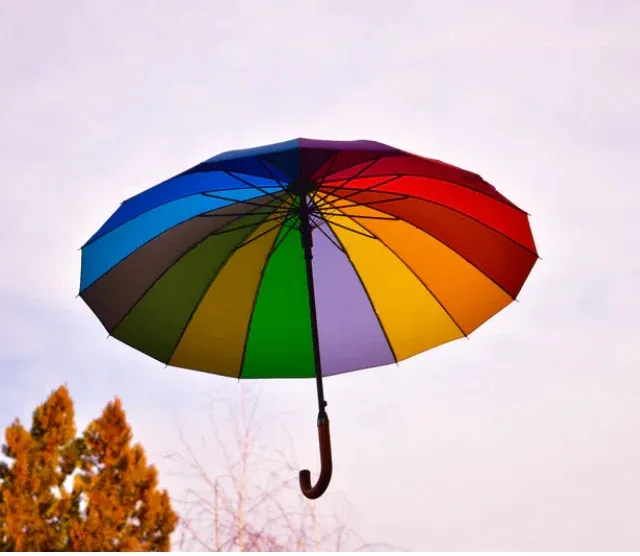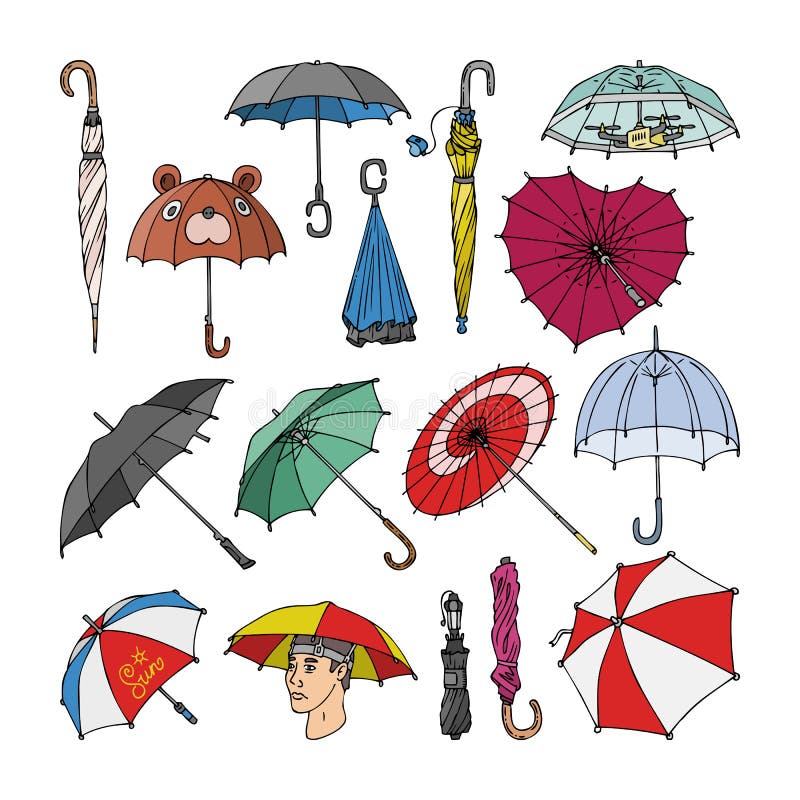Umbrellas: From Ancient Symbols of Power to Modern Weather Protectors...!!!
An umbrella is a highly versatile and essential tool designed to shield individuals from adverse weather conditions, primarily rain and sunlight. Umbrellas hold both practical and symbolic value across various cultures, enriched by a rich history and diverse uses.

The History of Umbrellas
The umbrella's origins trace back thousands of years, with evidence of their usage in ancient civilizations like Egypt, Mesopotamia, China, and Greece. Initially, umbrellas served as parasols to provide shade from the sun. In ancient Egypt, umbrellas symbolized power and status, often depicted in art being held over the heads of pharaohs and nobility. Similarly, in ancient China, umbrellas made from silk and paper were used by the elite to signify rank and prestige.
The modern umbrella, designed to protect against rain, began to take form in 17th-century Europe. The word "umbrella" is derived from the Latin term "umbra," meaning "shade" or "shadow." By the 18th century, umbrellas became more commonplace in everyday use, thanks to advancements in materials and construction.
Types of Umbrellas
Umbrellas come in various shapes, sizes, and designs, each serving different purposes:
-
Traditional Umbrellas: Featuring a classic design with a waterproof fabric canopy supported by a metal or fiberglass frame, these umbrellas are manually operated, with a central shaft and ribs extending to open the canopy.
-
Folding Umbrellas: Known as compact or travel umbrellas, these are designed for portability and easy storage. They feature telescopic shafts and folding canopies, making them convenient to carry in bags or backpacks.
-
Golf Umbrellas: Larger umbrellas providing maximum coverage, often used on golf courses to protect players and their equipment from rain and sun. They typically have a robust frame and a wide canopy.
-
Automatic Umbrellas: Equipped with a button mechanism for automatic opening and closing of the canopy, these umbrellas offer convenience and ease of use.
-
Bubble Umbrellas: With a dome-shaped canopy, these umbrellas provide better wind resistance and more coverage, effectively protecting users from rain and wind.
-
Artistic and Fashion Umbrellas: Designed with unique patterns, colors, and artistic elements, these umbrellas often serve as fashion accessories or statement pieces.

Materials and Construction
Umbrellas are constructed using various materials, each selected for its specific properties:
-
Canopy Fabric: Typically made of waterproof materials such as nylon, polyester, or Pongee fabric, the canopy is lightweight, durable, and provides effective protection against rain.
-
Frame: Consisting of the shaft, ribs, and stretchers, the frame is usually made of metal (aluminum or steel) or fiberglass, offering strength and flexibility. Ribs and stretchers support the canopy and are also made of metal or fiberglass.
-
Handle: Handles can be made from materials like wood, plastic, or rubber, designed for comfort and grip, often featuring ergonomic shapes.
Symbolism and Cultural Significance
Umbrellas hold various symbolic meanings and cultural significance around the world. In many cultures, umbrellas symbolize protection, status, and authority. For instance, red umbrellas are used in traditional Chinese weddings to shield the bride, symbolizing good luck and protection. In some African cultures, umbrellas are used in ceremonial events to signify the presence of royalty or important dignitaries.
In literature and art, umbrellas are metaphors for protection, shelter, and care, often appearing in paintings, stories, and films, representing themes of safety, comfort, and resilience.
Technological Advancements
Modern umbrellas have seen significant technological advancements, enhancing their functionality and durability. Some umbrellas now feature UV protection, offering additional defense against harmful sun rays. Windproof umbrellas are designed with reinforced frames and vented canopies to withstand strong winds without turning inside out. Eco-friendly umbrellas made from sustainable materials cater to environmentally conscious consumers.

Umbrellas are indispensable tools combining practicality with cultural significance. From their ancient origins as symbols of power and status to their modern-day use as essential weather protection, umbrellas have evolved to meet the needs of people worldwide. With diverse designs, materials, and technological advancements, umbrellas continue to be crucial accessories in our daily lives, providing comfort, convenience, and protection.
What's Your Reaction?

















